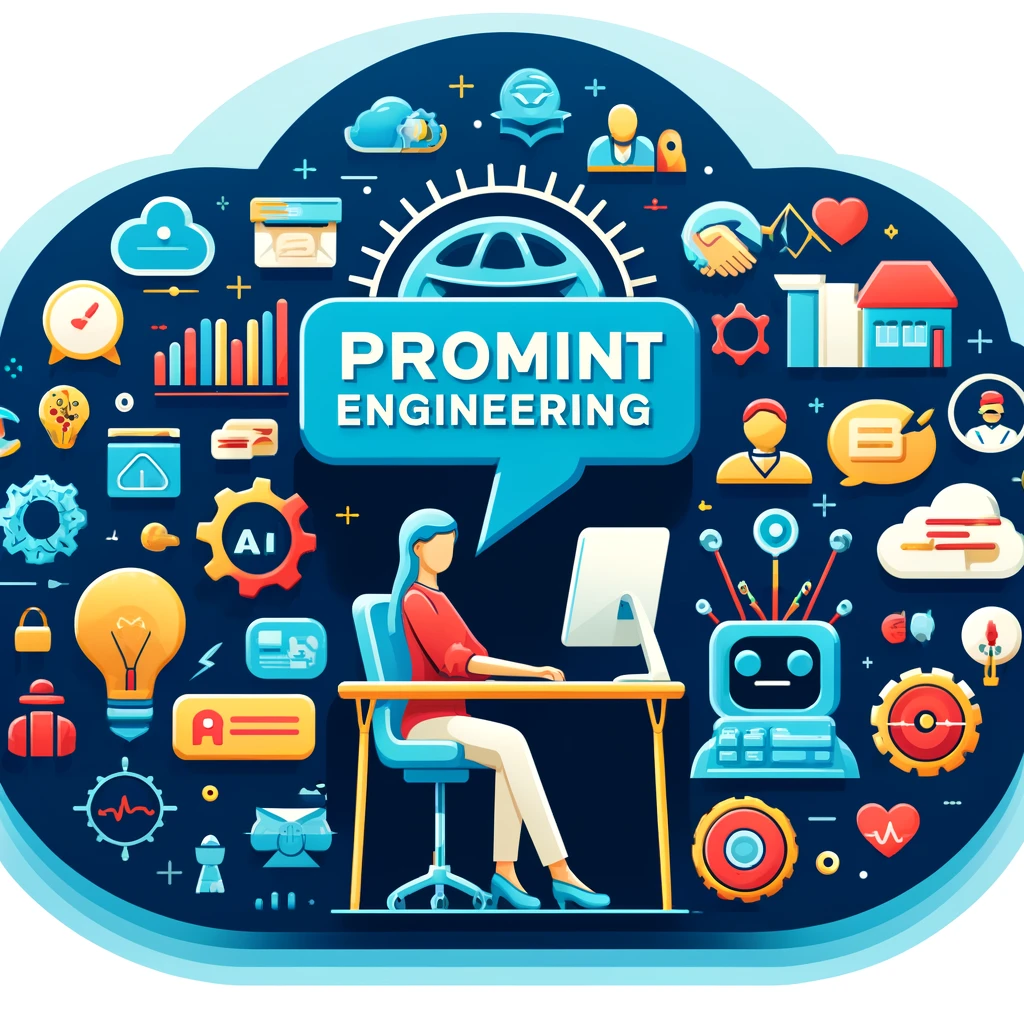
Advanced Techniques in Prompt Engineering
As you progress in your prompt engineering journey, it's time to explore some advanced techniques. These methods will help you create more sophisticated and effective prompts.
Introduction
Advanced techniques in prompt engineering include dynamic prompt generation, chaining prompts, and more. These strategies enable you to create complex interactions and refine AI responses. By mastering these techniques, you can leverage the full potential of AI systems to generate accurate and relevant outputs.
Dynamic Prompt Generation
Dynamic prompts adjust based on the AI's previous responses or changing conditions. This approach allows for more interactive and adaptable AI conversations. Dynamic prompt generation is particularly useful in scenarios where the context or requirements may evolve over time.
Examples:
Initial Prompt: "Describe the current weather in New York City."
Follow-up Prompt: "Based on the current weather conditions, suggest suitable outdoor activities."
Initial Prompt: "Summarize the main points of this article on climate change."
Follow-up Prompt: "Given the summary, explain the potential impacts of climate change on coastal cities."
Initial Prompt: "Translate the following sentence to French: 'Good morning, how are you?'"
Follow-up Prompt: "Now, provide a similar greeting in Spanish."
Dynamic prompts enhance the adaptability and relevance of AI interactions by allowing you to build upon previous responses and tailor prompts to evolving scenarios.
Chaining Prompts
Chaining involves using multiple prompts in sequence to guide the AI through a series of steps. This technique is useful for complex tasks that require detailed instructions. Chaining prompts helps break down complex tasks into manageable parts, ensuring thorough and accurate responses.
Examples:
Example 1:
Step 1: "Identify the main idea of this paragraph."
Step 2: "Summarize the paragraph based on the main idea you identified."
Step 3: "Provide an example that illustrates the main idea."
Example 2:
Step 1: "List the key components of a balanced diet."
Step 2: "Explain the importance of each component in maintaining health."
Step 3: "Create a sample meal plan for one day that includes these components."
Example 3:
Step 1: "Describe the concept of renewable energy."
Step 2: "Compare and contrast solar and wind energy in terms of efficiency and cost."
Step 3: "Discuss the potential environmental benefits of using renewable energy sources."
Chaining prompts helps guide the AI through a logical progression of tasks, ensuring comprehensive and coherent responses.
Multi-Step Prompts
Multi-step prompts involve using several prompts in succession to accomplish a complex task. This technique is particularly useful for tasks that require multiple stages or layers of detail.
Examples:
Example 1:
Step 1: "Research the history of the Internet."
Step 2: "Summarize the key milestones in the development of the Internet."
Step 3: "Analyze the impact of the Internet on modern communication."
Example 2:
Step 1: "Identify the major causes of World War II."
Step 2: "Describe the key events that occurred during World War II."
Step 3: "Explain the long-term effects of World War II on global politics."
Example 3:
Step 1: "Define artificial intelligence and its core principles."
Step 2: "Explore the different types of AI, including machine learning and deep learning."
Step 3: "Discuss the ethical considerations and potential risks associated with AI development."
Multi-step prompts allow for a structured and detailed exploration of complex topics, ensuring a thorough understanding of each stage of the task.
Adaptive Prompts
Adaptive prompts modify themselves based on the AI's previous responses, creating a dynamic and interactive experience. This technique is useful for refining responses and guiding the AI through nuanced tasks.
Examples:
Example 1:
Initial Prompt: "Explain the benefits of exercise."
AI Response: "Exercise improves cardiovascular health and mental well-being."
Adaptive Prompt: "Based on the benefits you mentioned, can you provide examples of specific exercises that enhance cardiovascular health?"
Example 2:
Initial Prompt: "Describe the process of photosynthesis."
AI Response: "Photosynthesis is the process by which plants convert sunlight into energy."
Adaptive Prompt: "Can you explain the role of chlorophyll in photosynthesis and how it aids in this process?"
Example 3:
Initial Prompt: "Summarize the plot of 'To Kill a Mockingbird'."
AI Response: "The plot centers around Scout Finch and her brother Jem growing up in the racially charged atmosphere of 1930s Alabama."
Adaptive Prompt: "Discuss how the character of Atticus Finch influences Scout and Jem throughout the novel."
Adaptive prompts create a more interactive and responsive experience, allowing for real-time refinement and redirection based on the AI's outputs.
Interactive Exercise
Try creating a chained prompt sequence for a complex task. Here's an example to get you started:
Step 1: "Identify the main idea of this paragraph."
Step 2: "Summarize the paragraph based on the main idea you identified."
Step 3: "Provide an example that illustrates the main idea."
Share your chained prompts in the comments and compare them with others. Discuss how you used dynamic generation and chaining to enhance your prompts. Experiment with different techniques and observe how they impact the quality and relevance of the AI's responses.
Additional Advanced Techniques
Here are some additional advanced techniques to further enhance your prompt engineering skills:
Conditional Prompts
Conditional prompts create prompts that change based on specific conditions. This technique allows for more flexible and context-aware AI responses. Conditional prompts are particularly useful when dealing with scenarios that may have varying contexts or requirements.
Example:
"If the story is set in the future, describe the technology used. Otherwise, describe the current technology."
In this example, the AI is instructed to provide different responses based on the time setting of the story. This ensures that the AI's output is relevant to the specific scenario.
Additional Examples:
Example 1:
Condition: "If the weather is sunny, suggest outdoor activities. If it's raining, suggest indoor activities."
Example 2:
Condition: "If the user is a beginner, provide basic instructions. If the user is advanced, provide advanced tips."
Example 3:
Condition: "If the document is a research paper, format the references in APA style. If it's a business report, use Chicago style."
Exploratory Prompts
Exploratory prompts encourage the AI to explore different angles of a topic. This technique is beneficial for brainstorming, research, and creative tasks. Exploratory prompts help generate diverse perspectives and ideas, making them ideal for comprehensive analysis and creativity.
Example:
"Discuss the pros and cons of renewable energy sources."
In this example, the AI is asked to explore both the advantages and disadvantages of renewable energy, providing a balanced view of the topic.
Additional Examples:
Example 1:
"Analyze the impact of social media on modern communication."
Example 2:
"Explore the potential benefits and risks of artificial intelligence in healthcare."
Example 3:
"Examine the various approaches to tackling climate change and their effectiveness."
Layered Prompts
Layered prompts break down complex requests into multiple layers of prompts. This method ensures that each aspect of the task is addressed thoroughly and logically. Layered prompts are effective for tasks that require detailed analysis and multi-faceted responses.
Example:
"First, summarize the plot of the book. Then, analyze the main themes presented."
In this example, the AI is guided through a step-by-step process to first summarize the plot and then delve into an analysis of the themes, ensuring a comprehensive response.
Additional Examples:
Example 1:
Layer 1: "Describe the causes of the Great Depression."
Layer 2: "Explain the economic and social impact of the Great Depression on American society."
Layer 3: "Analyze the measures taken by the government to address the Great Depression."
Example 2:
Layer 1: "Identify the key features of quantum computing."
Layer 2: "Discuss the potential applications of quantum computing in various industries."
Layer 3: "Evaluate the challenges and limitations of implementing quantum computing technology."
Example 3:
Layer 1: "Outline the key events that led to the American Revolution."
Layer 2: "Explain the ideological motivations behind the American Revolution."
Layer 3: "Assess the long-term effects of the American Revolution on global politics."
Combining Advanced Techniques
Combining these advanced techniques can further enhance the effectiveness and sophistication of your prompts. By integrating conditional, exploratory, and layered prompts, you can create complex and nuanced interactions with the AI.
Example:
Scenario: Creating an in-depth research project on renewable energy.
Step-by-Step Approach:
1. Conditional Prompt: "If the focus is on solar energy, proceed to step 2. If the focus is on wind energy, proceed to step 3."
2. Exploratory Prompt: "Discuss the technological advancements and economic benefits of solar energy."
3. Exploratory Prompt: "Analyze the environmental impact and potential challenges of wind energy."
4. Layered Prompt: "First, summarize the main findings on renewable energy. Then, evaluate the overall potential of renewable energy sources in combating climate change."
Interactive Exercise
Practice creating prompts using these advanced techniques. Here’s an exercise to get you started:
Task: Developing a comprehensive guide on AI ethics.
Step-by-Step Approach:
1. Conditional Prompt: "If the audience is students, provide a basic introduction to AI ethics. If the audience is professionals, provide an in-depth analysis of AI ethics."
2. Exploratory Prompt: "Discuss the ethical implications of AI in data privacy and security."
3. Layered Prompt: "First, outline the key ethical principles in AI development. Then, analyze case studies where these principles were challenged."
Share your prompts and discuss how you used these advanced techniques to enhance your prompts. Compare your approaches with others and learn from different perspectives.
Conclusion
Mastering these advanced techniques will elevate your prompt engineering skills. Keep experimenting and refining your methods to create more effective and sophisticated prompts. The more you practice, the more proficient you will become at leveraging dynamic prompt generation, chaining prompts, and other advanced strategies. These techniques will enable you to create more interactive, adaptable, and relevant AI interactions.

Real-World Applications of Prompt Engineering
Discover real-world applications of prompt engineering across various industries. Learn how prompt engineering is used in content creation, customer support, education, and more.
View
Leveraging Context in Prompts
Discover how to leverage context in your prompts to enhance the quality and relevance of AI responses. Learn practical techniques and examples.
View


